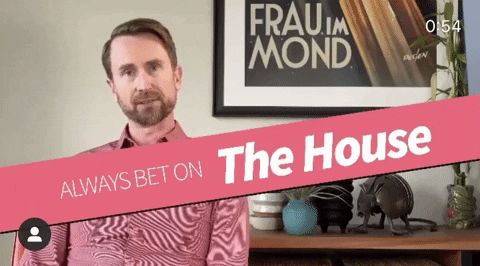More and more, how you show up on video—whether it’s Zoom, Youtube, or Linkedin—determines if…
- Your projects are greenlit
- The hiring manager calls you back
- The decision maker says yes
What you wear can help or hinder you. In this post, I’ll give you the do’s and don’ts of on-camera attire.
DO nail your message
Before you even think about attire, nail your message—your ideas, your words, and your delivery. Communication and persuasion are higher leverage than what you wear.
Good attire is a COMPLEMENT to a great message and a convincing delivery, NOT A REPLACEMENT. With that being said, let’s get into it…
DON’T wear vivid, stark whites
Bright whites can wash out your face if you’re light-skinned and create extreme contrast if you’re dark-skinned
A softer, gentler shade of white like the below works well:
DON’T wear deep blacks
These colors are not only harder to light, they cast shadows on skin that create an aging effect and make you look tired.

DON’T wear clothing that matches your skin tone
This will catch someone’s eye, but probably not in the way you want.
DO wear solid colors
Solid colors are simple and timeless. And they won’t look dated years from now.
DON’T wear clothing with text, logos, or loud graphics
An exception (sometimes): when the logo is yours or your company’s.
DO wear colors that contrast with your background
Without contrast, you blend into the background and look like a floating head.
With contrast, you get a nicely balanced composition.
DON’T wear heavy, thick fabrics
Camera lighting elevates room temp. Combine that with heavy fabrics and you might start sweating, which isn’t a great look.
This gent looks fantastic but I bet he’s feeling a little warm:
DON’T wear wrinkly clothing
DON’T wear complex patterns
Stay away from plaids, stripes, herringbones, and checks.
Busy patterns are distracting and can pose technical difficulties.
DON’T wear vertical stripes
…unless you’re going for an acid trip aesthetic.

DON’T wear a bright white undershirt
It can show through your shirt when the lighting is really strong.
Go with no undershirt, a v-neck, or a more muted color.
Finally:
DO wear clothes that are comfortable
Comfortable clothes put you at ease. When you’re at ease, you’re confident.
Confidence makes or breaks your performance on camera, and knowing you’re wearing the right clothes is an instant confidence boost.